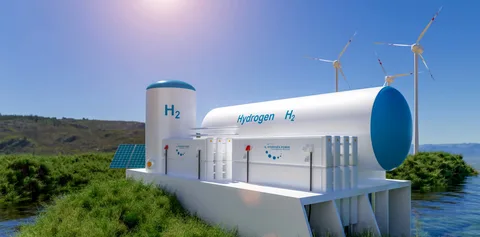Introduction
The Hydrogen Market focuses on the production, storage, distribution, and utilization of hydrogen as a clean energy source. Hydrogen is a versatile fuel that can be used in transportation, power generation, industrial processes, and chemical production. With the global push for decarbonization and renewable energy integration, hydrogen is gaining prominence as a sustainable alternative to fossil fuels. Green hydrogen, produced from renewable sources via electrolysis, is emerging as a key solution to reduce greenhouse gas emissions and support energy transition initiatives worldwide.
Market Drivers
Key drivers include the growing demand for low-carbon energy, supportive government policies, and technological advancements in hydrogen production and storage. Renewable energy integration, such as solar and wind-powered electrolysis, enables the production of green hydrogen. Incentives, subsidies, and investments by governments and private players drive adoption in transportation, industry, and power generation sectors. Increasing demand for hydrogen in fuel cells for vehicles and stationary applications, coupled with industrial use in refining, ammonia, and steel production, further supports market growth. Strategic partnerships and pilot projects by energy companies accelerate commercialization.
Market Challenges
Challenges include high production costs, infrastructure limitations, and safety concerns. Green hydrogen is currently more expensive than conventional fossil fuels, limiting widespread adoption. Lack of hydrogen distribution networks, storage facilities, and refueling infrastructure hinders market expansion. Safety and regulatory compliance related to hydrogen handling and transport remain critical concerns. Additionally, competition from other low-carbon technologies, such as battery-electric vehicles and biofuels, can impact hydrogen adoption in specific sectors.
Opportunities
Opportunities exist in large-scale green hydrogen projects, fuel cell adoption, and industrial applications. Declining costs of renewable energy and advancements in electrolysis technology will make green hydrogen more cost-competitive. Emerging markets in Europe, Asia-Pacific, and North America are investing in hydrogen infrastructure and pilot projects. Hydrogen blending in natural gas pipelines, industrial decarbonization, and export of green hydrogen are key growth avenues. Collaborations between energy companies, governments, and technology providers foster innovation and accelerate commercialization.
Regional Insights
Europe leads the hydrogen market with strong policy support, ambitious decarbonization targets, and significant investment in green hydrogen projects. Asia-Pacific, particularly Japan, South Korea, and China, is adopting hydrogen in transportation and industrial applications. North America focuses on technological development, pilot projects, and hydrogen infrastructure expansion. The Middle East is exploring hydrogen export opportunities, leveraging abundant renewable energy resources. Latin America and Africa are emerging markets with potential for hydrogen production using renewable energy sources.
Future Outlook
By 2032, the Hydrogen Market is expected to grow significantly as governments, industries, and energy providers focus on decarbonization. Advancements in green hydrogen production, storage, and distribution will enhance commercial viability. Expanding fuel cell adoption in transportation and stationary applications will drive demand. Public-private partnerships, supportive policies, and international collaborations will accelerate global hydrogen market development. Hydrogen is anticipated to play a central role in achieving net-zero emission targets and the global energy transition.
Conclusion
The Hydrogen Market is critical for a sustainable, low-carbon future. While challenges like high costs and infrastructure gaps remain, technological advancements, government incentives, and increasing industrial and transportation demand are driving market growth. Hydrogen is set to become a cornerstone of global decarbonization and renewable energy strategies.

